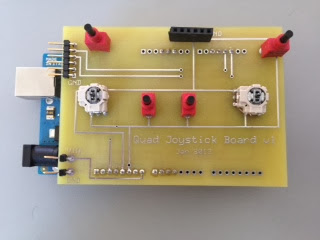May I please pose a few questions for those intimately familiar with the CF firmware:
1) It seems that eulerRollDesired and eulerPitchDesired are the desired roll and pitch pose angles for the CF. Does "zero" mean pure horizontal, and are the units in degrees (not radians)?
2) It also seems that eulerYawDesired is a desired yaw rate. This is degrees per second, right? Is CCW (looking down from above) positive yaw?
I'm pretty sure about the above two, but just want to make sure before I start needlessly crashing the CF!

3) How do the raw integer variables that get sent up by the CFclient, over the CrazyRadio, map onto the variables eulerRollDesired, eulerPitchDesired, and eulerYawDesired? In other words, suppose I want eulerRollDesired to be 1.0 (for 1.0 degrees) and eulerPitchDesired to be -2.5 and for the yaw rate to be 5 degrees per second. What are the actual integer values that get sent up from CFclient?
In other words, suppose I were to use the "simple code example" at the bottom of this page (
http://wiki.bitcraze.se/projects:crazyf ... tils:pylib) to send up the four stick signals (roll/pitch/yaw/thrust):
self.crazyflie.commander.send_setpoint(roll, pitch, yawrate, thrust)
What should variables "roll", "pitch", and "yawrate" be to encode respectively 1.0 degrees, -2.5 degrees, and 5 degrees per second? (I will be using my own controller for this.)
I understand how thrust is encoded, and how the final actuator signals are used to generate the motor signals. I just don't understand the scaling on the uplink.
Thanks!!
